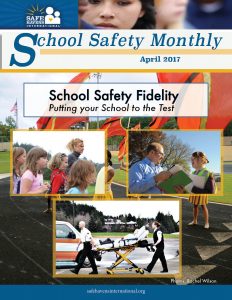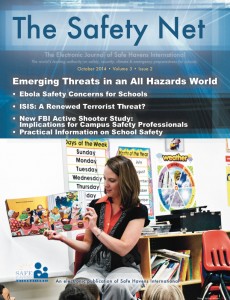
Options-based active shooter training programs.
This article was recently published in College Planning and Management Magazine. Though written for a higher education audience, most if not all of the principals I described would be relevant for options-based active shooter training programs for K12 schools as well. Non-public schools should take extra care in implementing options-based active shooter training programs as they lack qualified immunity and are subject to OSHA regulations that prohibit exposing trainees to danger from injury. Safe Havens International analysts have received many complaints from school and police officials regarding injury during options-based active shooter training programs, with at least one school employee who reported being permanently disabled when his arm was crushed during a training session. The individual I spoke to stated that he still has no use of one arm though he has been through a series of five surgical procedures. He also told me that three people in his training session had to be hospitalized for injuries received during the training session.
While options-based active shooter training programs have become fairly popular, they have also been highly controversial. Currently, there are no options-based active shooter training programs that have been validated as effective. Of considerable concern, these programs are often marketed as being “best practice” which could create a significant burden should an organization have to prove that the training program meets this definition during litigation..
Our next book Preventing and Preparing for Active Shooter, Active Killer, Hate Crimes and Terrorist Attacks contains a detailed chapter on the development of effective and court-defensible training concepts for active shooter incidents.
The complete article Training for the Unthinkable – Does Your Options-Based Active Shooter Training Approach Meet Standards of Care? at: https://webcpm.com/Articles/2017/06/01/Active-Shooter-Training.aspx
 School Planning and Management Magazine recently published a feature article I submitted several months back. The article – Preventing Grooming, Sexual Assault and Sexual Misconduct in Schools is focused on concepts that school officials can use to reduce the chances that these tragic situations will occur. While the field of K12 education has made tremendous progress in this area, there are still opportunities for improvement in the way schools are designed and operated. This article focuses on design concepts, security technologies, and increased awareness that can help prevent these types of incidents.
School Planning and Management Magazine recently published a feature article I submitted several months back. The article – Preventing Grooming, Sexual Assault and Sexual Misconduct in Schools is focused on concepts that school officials can use to reduce the chances that these tragic situations will occur. While the field of K12 education has made tremendous progress in this area, there are still opportunities for improvement in the way schools are designed and operated. This article focuses on design concepts, security technologies, and increased awareness that can help prevent these types of incidents.



